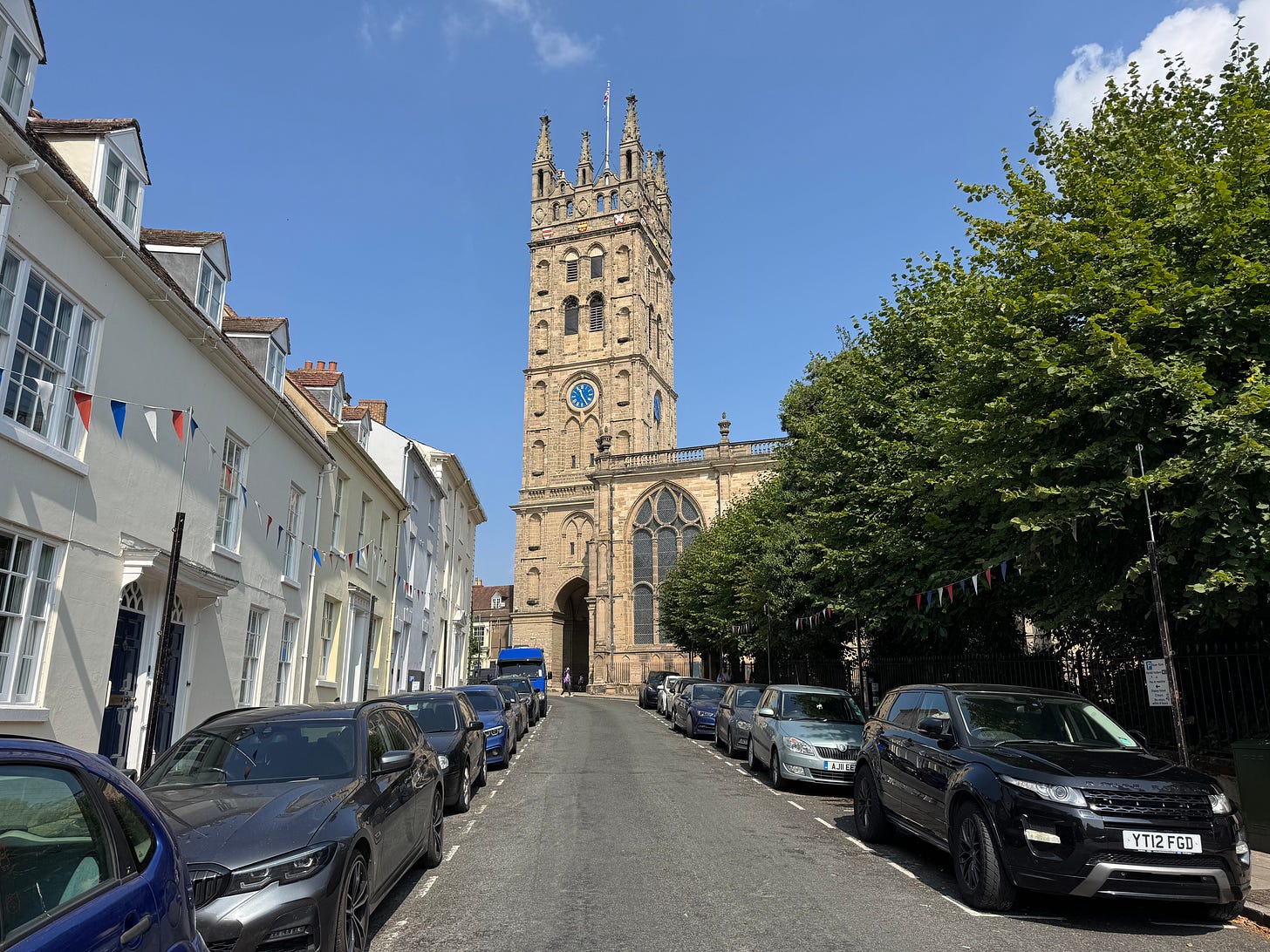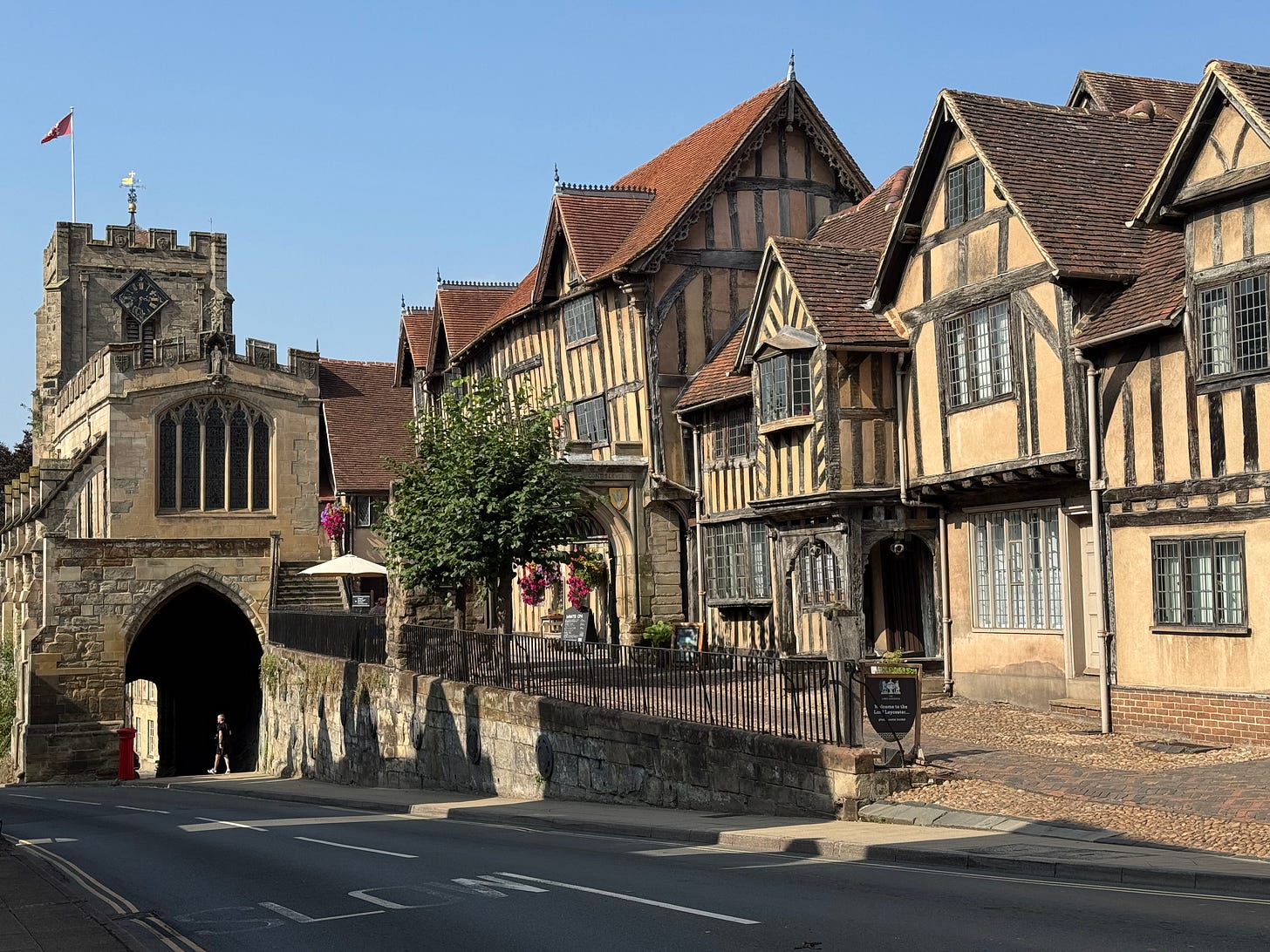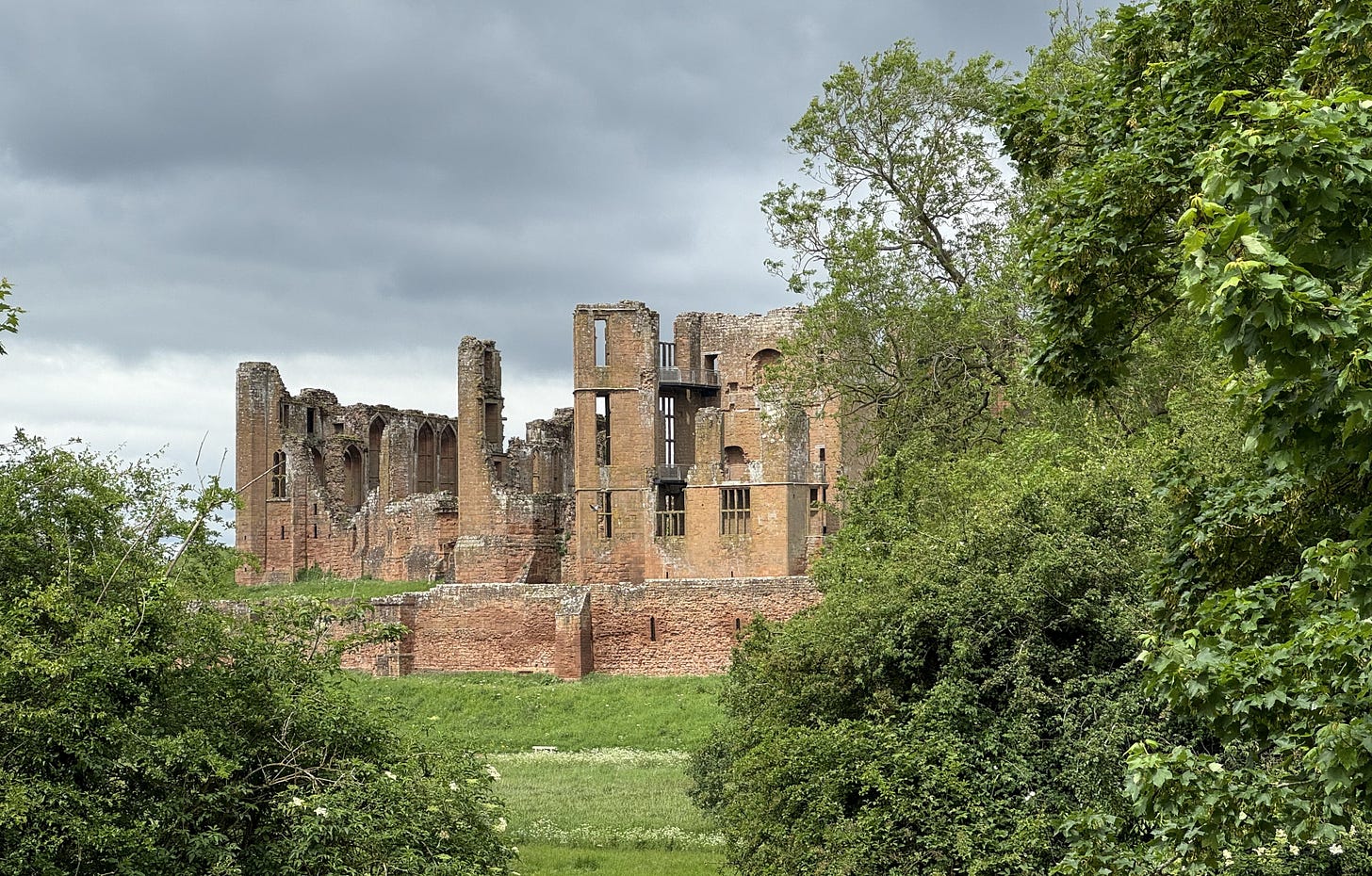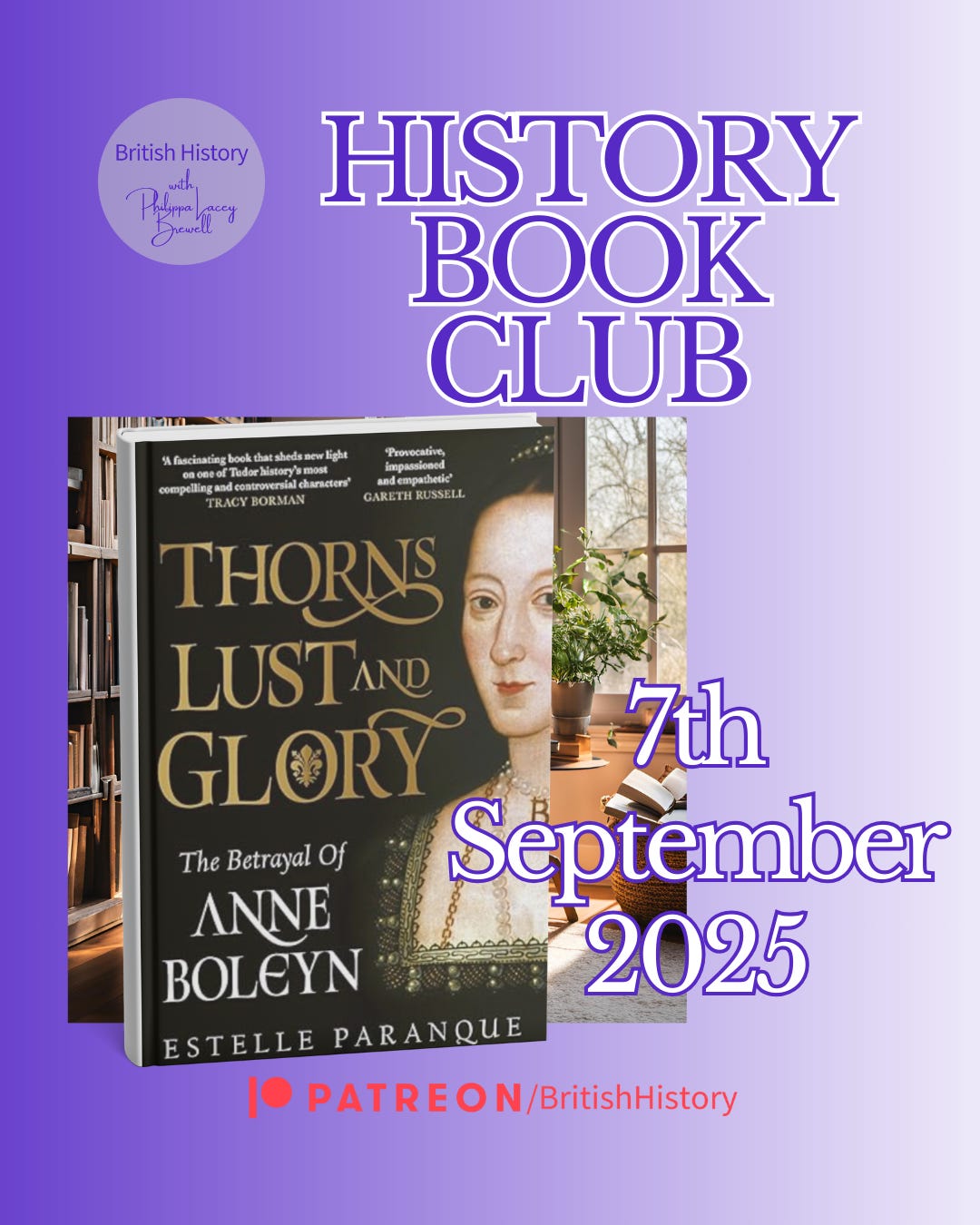Warwick - what there is to see for the history lover
Interview with Aaron Manning about the infamous characters of The House of Warwick
Hello Fellow History Lover!
In 1068, not far from where the Roman roads of Watling Street and the Fosse Way intersect in the centre of England, the new Norman occupiers of England hastily built a castle on the edge of an inland cliff. It quickly became a strategic point in the country and remained so for centuries, the original wooden structure soon replaced by a stone fortress. Warwick Castle, which is as famous for some of its inhabitants as for itself, sits in the historic town from which it takes its name. I met local historian Aaron Manning there to ask him about the history of the castle, its notable inhabitants and the upcoming Warwick Words Festival of which he is one of the organisers. You can watch my interview with Aaron from 2pm on 31st August on Youtube or you can listen on the podcast.
Warwick Words is an annual history festival based in the town with a wide-ranging programme of events from local history to big names in the history world. This year the festival is taking place form 29th September - 5th October. For the full event programme and to purchase tickets, please visit warwickwords.co.uk
Warwick is the perfect destination for the history traveller
What to see in Warwick and the surrounding area
Visitors to Warwick with an interest in history are spoilt for places to see and visit. The 12th century St Mary’s Church with it 15th century Beauchamp Chapel, The Lord Leycester associated with Robert Dudley, Earl of Leicester but the buildings of which date back to the 12th century, two town gates with chapels still situated above, are all available to see.
Overall, the town has a more Georgian facade, having to be rebuilt after most of the town was lost in the great fire of 1694, which makes the medieval survivor The Lord Leycester even more special.
For those who are able to travel slightly further afield, Kenilworth Castle, once the scene of a 19 day visit by Elizabeth I to Robert Dudley where he proposed marriage for the final time, is only a short drive away.
Close by to Kenilworth Castle (indeed walkable) are the remains of St Mary’s Abbey, the church of which was saved at the Abbey’s dissolution and later visited by Elizabeth I in 1575. The door of St Nicholas Church was originally in the Abbey and is a beautiful survivor from the 12th century Priory.
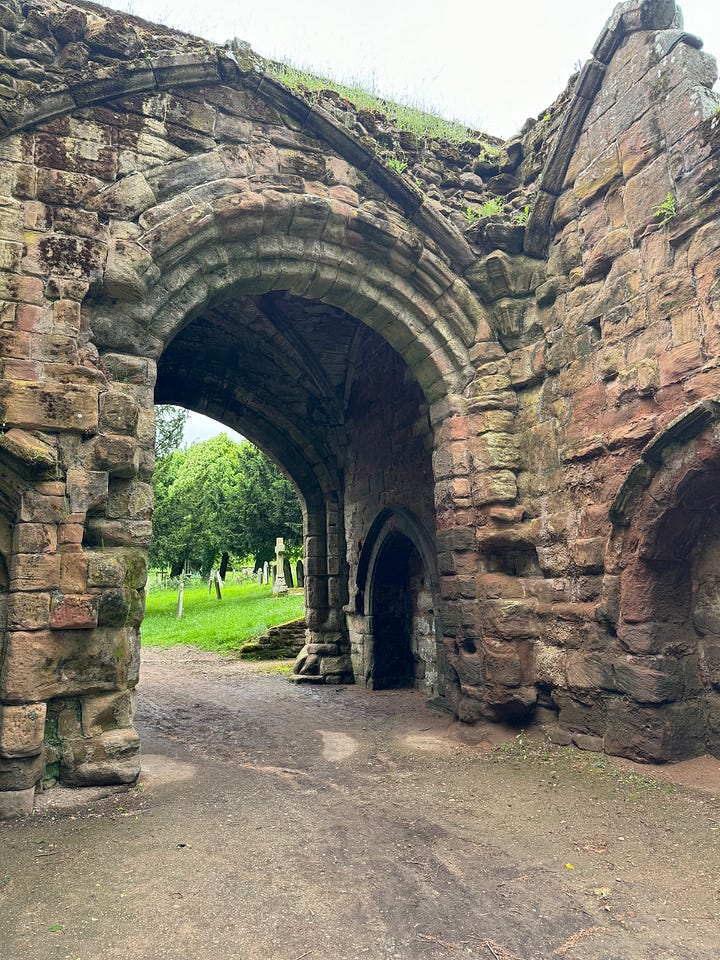

If you are heading to Warwick, either for the Warwick Words History Festival or at any other time, see if you can fit in a visit to all these places, you’re only regret will probably be that you would like more time, as they are all fascinating to the person who loves to travel history!
Before I let you go, would you like to be part of a history community which meets every couple of months to discuss a hot topic history book? Soon we will be voting on our book choices for 2026 and all members get a say! Book Club is a benefit of being a member of my Patreon, which you can join for £5 per month (discounts are given for yearly memberships) and are able to cancel anytime if your circumstances change. Click here to see what benefits you would get.
Upcoming Book Club
On Sunday 7th September, 7pm UK time, History Book Club will be discussing ‘Thorns Lust & Glory’ by Estelle Paranque. Book Club is open to full paying members of my British History Patreon (membership of which also gets you a complimentary paid subscription to this Substack)!
Until next time, take care!
Philippa 💜




